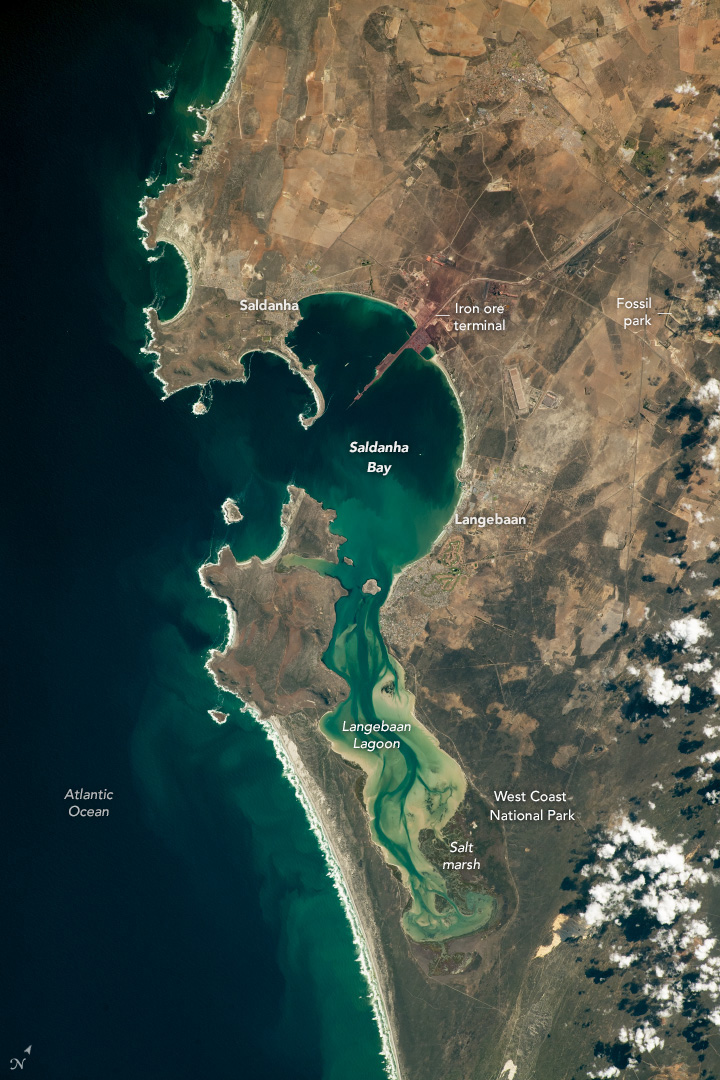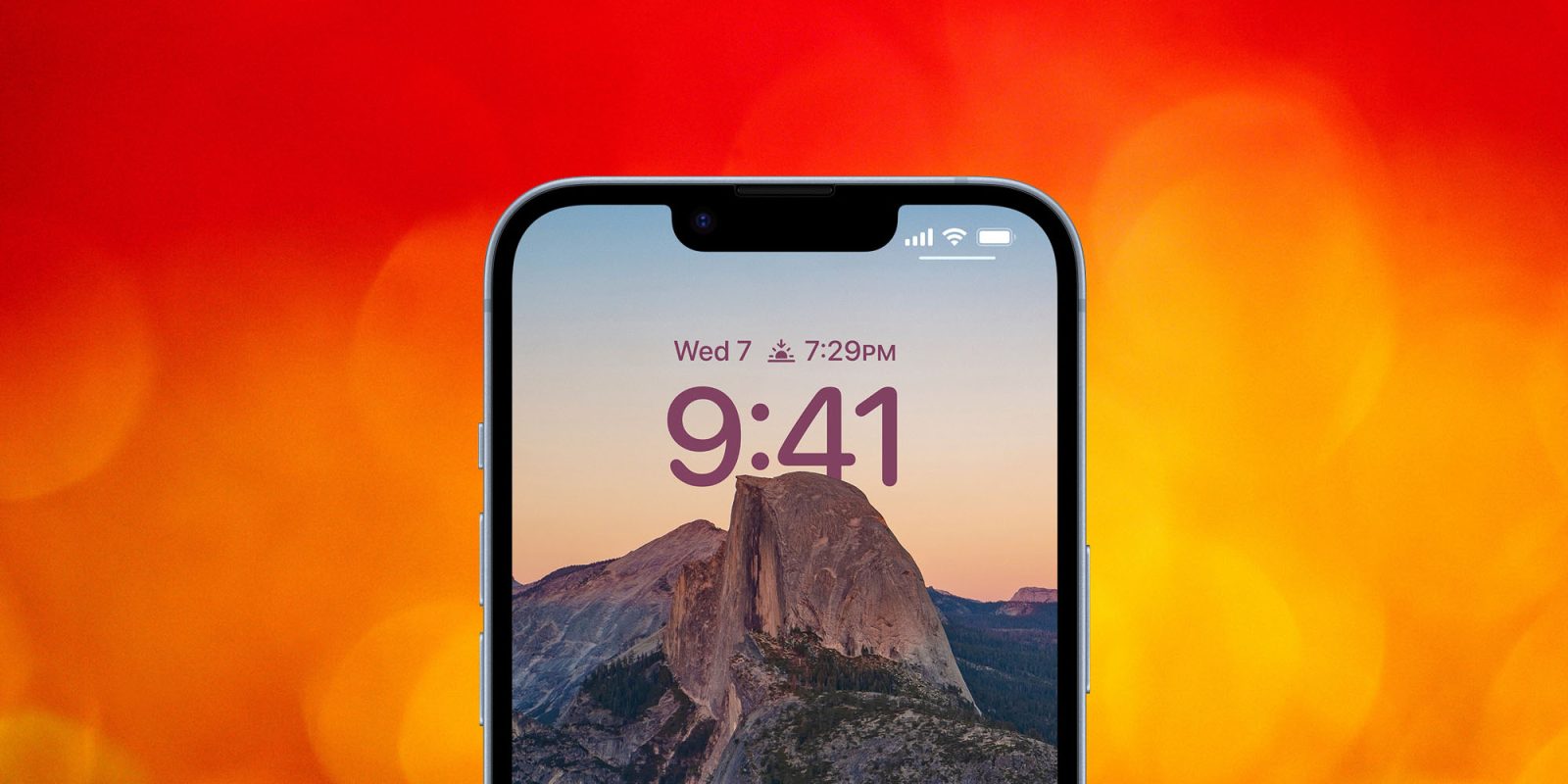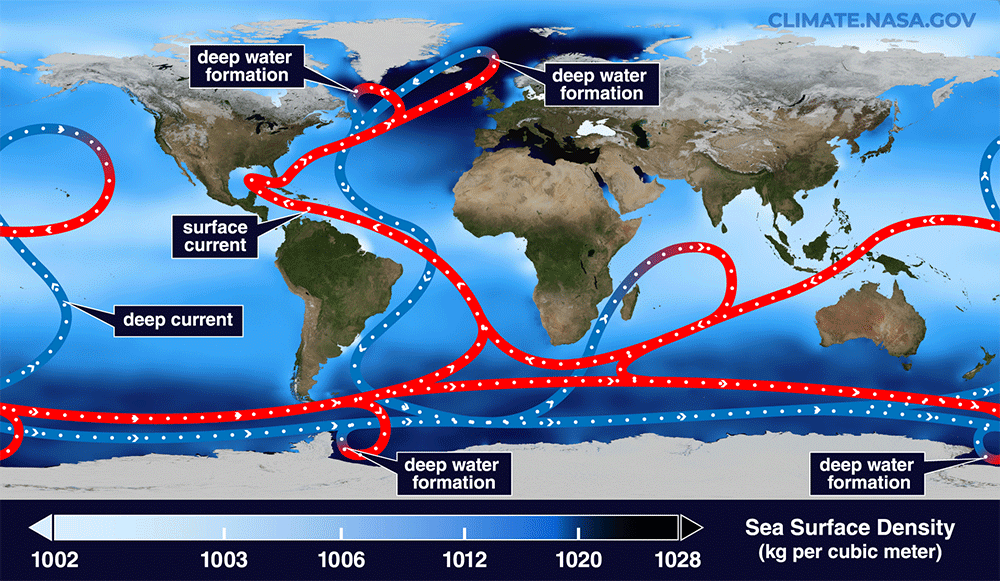An astronaut aboard the International Space Station captured this image of Saldanha Bay and its southerly extension known as Langebaan Lagoon in the Western Cape province of South Africa. Langebaan Lagoon, one of the few lagoons along South Africa’s coastline, is a shallow tidal estuary with no river flowing into it. The floor of the lagoon is a sand flat with tidal channels, visible as darker green meandering strands. Due to its water depth and protection from strong southerly winds, Saldanha Bay has provided a haven for ships over the centuries. For scale, the length of this bay and lagoon from the town of Saldanha to the southern tip of the lagoon is 27 kilometers (16.5 miles).
The color of the landscape indicates various types of land use. Much of the lighter-toned areas in the upper half of the image are agricultural fields where farmers grow crops such as corn, wheat, and olives. Townscapes such as Saldanha and Langebaan also appear light brown and gray. Darker surfaces in the lower part of the image indicate semi-desert shrubby vegetation. This natural vegetation has become reestablished within the West Coast National Park.
The export of goods and mineral resources is a key industry for the pictured communities. Saldanha, located on the shore of cold, highly productive waters, is a center for fishing. And the long railroad pier that juts 4.4 kilometers (2.7 miles) into Saldanha Bay is where 96 percent of South Africa’s iron ore is loaded onto ships before heading abroad. The iron ore comes from the Northern Cape province 860 kilometers (534 miles) to the northeast.
The region has become a tourist center, and the bay and lagoon are a popular spot for water sports. The establishment of the West Coast National Park in 1987 protects the lagoon and surrounding coast as a nature reserve and includes a marine park, a RAMSAR site, and a bird center. The West Coast Fossil Park (top-right) has become a tourist attraction because it contains a diverse collection of 5-million-year-old fossils. Geologists interpret the sediments in which the fossils are found as being nearshore depositional environments similar to the modern Langebaan Lagoon.
Astronaut photograph ISS067-E-35748 was acquired on May 7, 2022, with a Nikon D5 digital camera using a focal length of 400 millimeters. The image was provided by the ISS Crew Earth Observations Facility and the Earth Science and Remote Sensing Unit at Johnson Space Center. The image was taken by a member of the Expedition 67 crew. It has been cropped and enhanced to improve contrast, and lens artifacts have been removed. The International Space Station Program supports the laboratory as part of the ISS National Lab to help astronauts take pictures of Earth that will be of the greatest value to scientists and the public and to make those images freely available on the Internet. Additional images taken by astronauts and cosmonauts can be viewed at the NASA/JSC Gateway to Astronaut Photography of Earth. Caption by Justin Wilkinson, Texas State University, JETS Contract at NASA-JSC.














